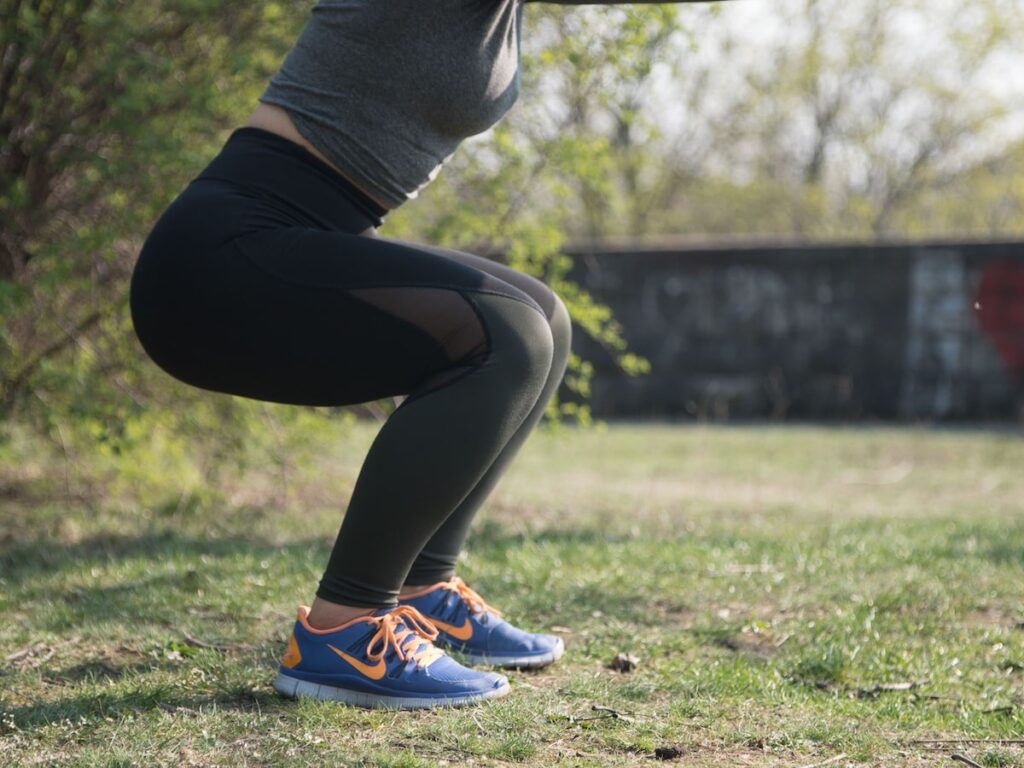Squatting is one of the most fundamental exercises in strength training. However, many people struggle with proper squat form, which can result in injuries and limited progress. In this blog, we delve into some of the most common issues with people’s squat form and how to best correct them.
Common Issues Hindering a Perfect Squat
Squatting is a fundamental exercise that builds strength and stability in the lower body and in the core, the sturdy part between your upper and lower body. However, achieving the perfect squat can be challenging due to various form issues. Understanding and correcting these common problems can help you perform squats more effectively and safely. Here are the most common issues hindering a perfect squat. For a deeper look at how muscle adaptation works, check out What the Heck Is Hypertrophy Training?. Here are the most common issues hindering a perfect squat.
1. Knees Caving In
This is a common issue when squatting, and it often occurs because of weak glute muscles. To correct this issue, focus on pushing your knees out during the squat, engaging your glutes, and making sure your feet are properly positioned.
Watch the video to see what this issue looks like—and how to spot it in your own squat.
2. Rounded Back
When squatting, rounding the back can put a lot of pressure on the lower back and cause injury. To correct this, make sure to keep your chest up and your back straight throughout the movement. Also, engage your core muscles to maintain a stable spine.
3. Shallow Squat
Many people tend to perform shallow squats, which limit the engagement of the muscles in the legs and glutes. To correct this, make sure to squat down to at least parallel (hips in line with knees) or deeper. This will ensure that you are engaging the muscles effectively and maximizing the benefits of the exercise.
4. Forward Lean and Fallen Shoulders
Leaning too far forward during a squat can place excess pressure on your knees and reduce glute activation. To correct this, keep your chest lifted and your weight evenly distributed across your feet. Engage your core to stay balanced, and gently roll your shoulders back, drawing the lower tips of your shoulder blades together—without lifting your chest or breastbone.
Watch the video to recognize what forward lean and slouched shoulders look like in real time.
5. Heels Rising
If your heels lift off the ground when squatting, it’s a sign that your weight is shifting too far forward. To correct this, make sure to distribute your weight evenly over your feet, engage your glutes, and focus on pushing through your heels as you come up from the squat.
Watch the video to catch this issue before it affects your balance.
6. Incorrect Foot Position
Our foot position can have a big impact on your squat form. Make sure to position your feet shoulder-width apart and turn them out slightly to engage your glutes. Also, make sure your weight is distributed evenly over your feet.
Mastering Squat Form: Tips for Success
If you consider yourself a beginner, watch Dr. Gretchen Hawley’s video about how to squat effectively with the support of a wall. Here are some recommendations to master squatting:
1. Start with Bodyweight Squats
Begin with bodyweight squats to focus on your form without the added complexity of weights.
2. Warm-Up Properly
Always warm up before squatting to increase blood flow to your muscles and improve flexibility. Dynamic stretches and light cardio can be effective.
3.Focus on Form
Ensure your feet are shoulder-width apart and turned out slightly. Keep your chest up, back straight, and engage your core throughout the movement.
4. Work on Mobility
Improve hip, ankle, and thoracic spine mobility to achieve a deeper and safer squat. Incorporate stretches and mobility exercises into your routine. (Learn more in Endurance Training and how it contributes to mobility and core strength, and explore Stability Training Exercises for balance support.)
5. Strengthen Key Muscles
Build strength in your glutes, hamstrings, quadriceps, and core. Exercises like lunges, deadlifts, and planks can help. See Strength Training Exercises to build the foundation you need and enhance your lower body strength.
6. Use a Mirror or Record Yourself
Watching yourself squat in a mirror or recording your movements can help you identify and correct form issues.
7. Progress Gradually
Start with light weights or just your body weight and gradually increase the load as your form improves.
8. Seek Professional Guidance
Consider working with a certified personal trainer to receive personalized feedback and ensure you’re performing squats correctly and safely.
9. Practice Regularly
Consistency is key. Regular practice will help you build muscle memory and improve your technique over time.
10. Pay Attention to Your Breathing
Breathe in as you lower into the squat and exhale as you push up, maintaining a steady breathing pattern to support your core and overall stability.
11. Listen to Your Body
Pay attention to any pain or discomfort. If you experience pain, stop and reassess your form or seek professional advice.
12. Seeking Guidance
A certified personal trainer can be invaluable for identifying and correcting form issues, focusing on proper technique, and ensuring you perform exercises safely and effectively.
Invest in Your Fitness Journey
Our personal trainers meet you at your level of fitness and build you up from there! They will challenge you and push you further than you would go on your own or even with the help of family or friends. Making this commitment can help you stay accountable, maintain motivation, and reach your fitness goals. Let us create a program designed to challenge you and make your workouts enjoyable as you progress toward your goals. We are here to guide you, push you through your workouts, and keep you moving!
Isn’t it time to invest in yourself? Book your complimentary 60-min consultation: Body Assessment + Personal Training Session + Nutrition and Exercise Recommendations.



